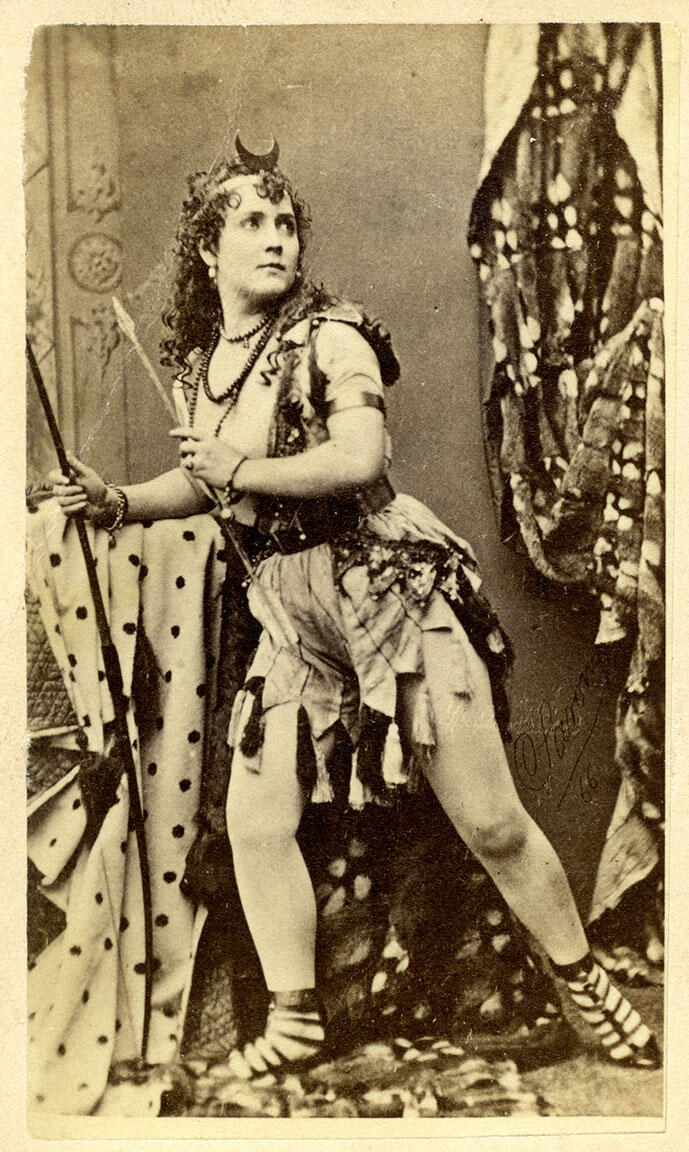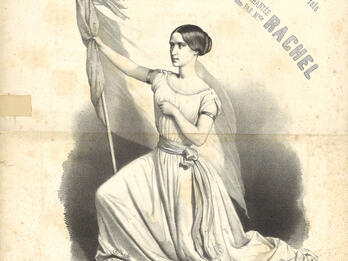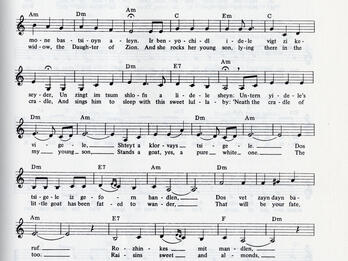Portrait of Adah Isaacs Menken
Napoleon Sarony
1866

Creator Bio
Napoleon Sarony
Born in Quebec, then part of the British colony of Lower Canada, Napoleon Sarony moved to New York in 1836 to work as an illustrator. He later cofounded a photography firm in 1843. When his wife died in 1858, he left the firm and traveled across Europe in search of a new creative community and more artistic training. He spent time with his brother Oliver, a famed photographer, in Scarborough, England, before opening his own studio in Birmingham. He returned to New York in 1866. Over the course of his lifetime, Sarony photographed Sarah Bernhardt, Oscar Wilde, William T. Sherman, Mark Twain, and countless other luminaries in theater, politics, and literature.
Related Guide
Theater in Jewish Culture
The novelty in Jewish performing arts in the later eighteenth and early nineteenth centuries involved the adaptation of traditional materials into new forms, as well as a turn to performing arts that were unconnected to religious life.
You may also like
The Pleasure Trip of Sweethearts Reunited after the Agonies of Love Unrequited in the City of Tiryaq in Iraq

Poster of Rachel Félix
The Song of Our Forefather Jacob and His Sons
The Fake Doctor



